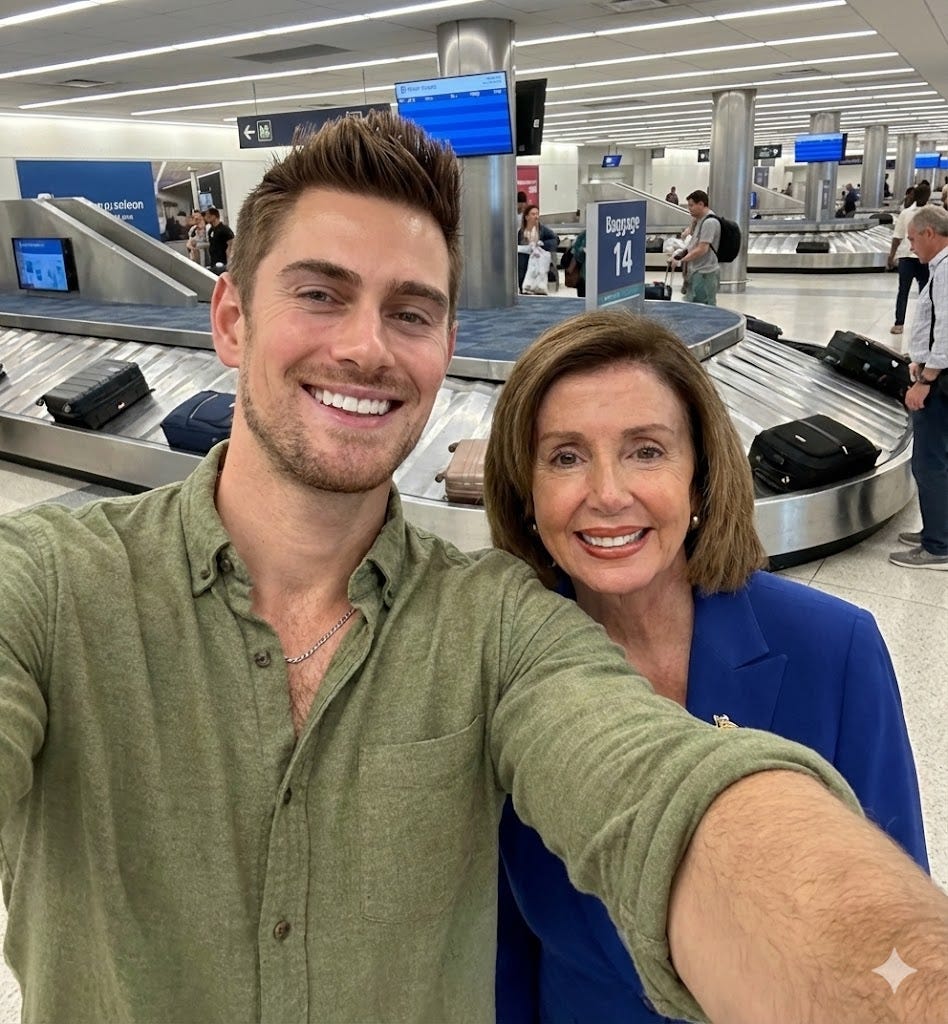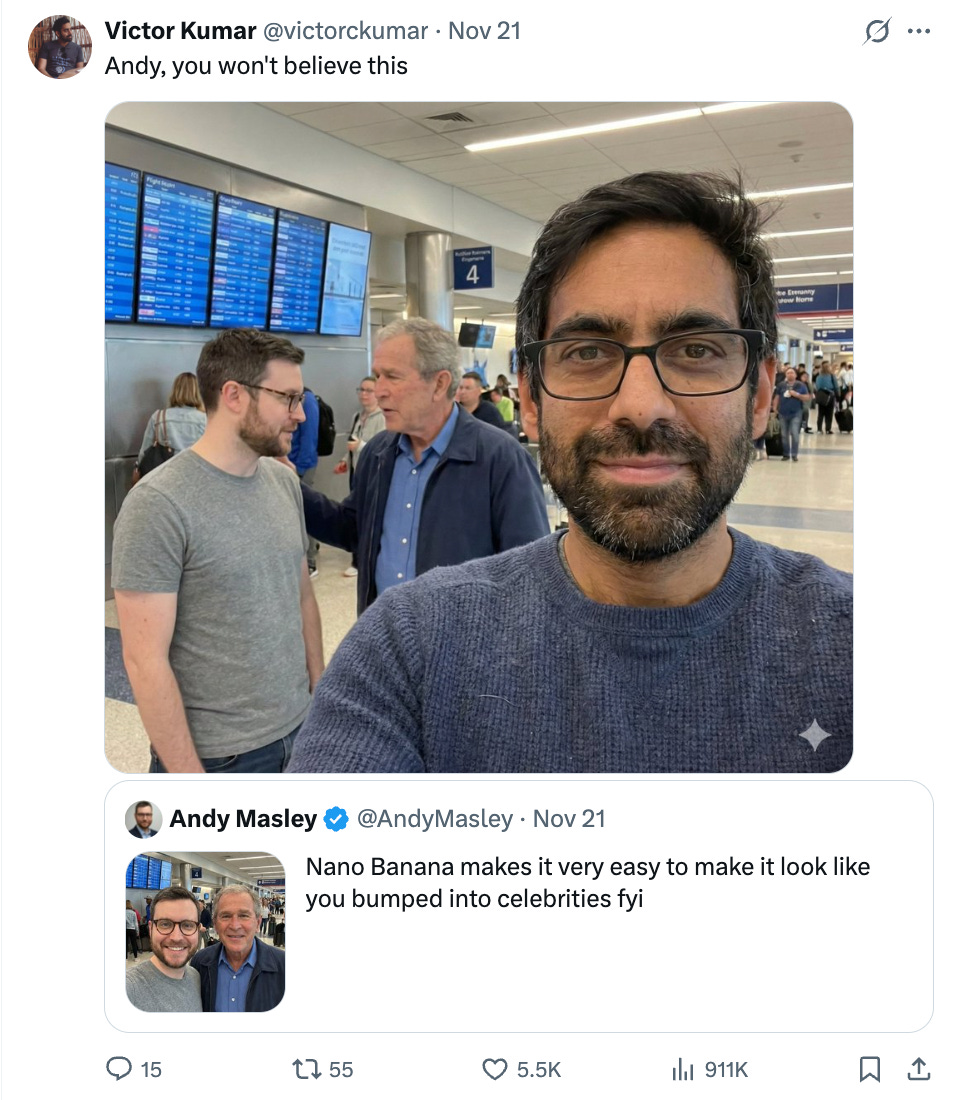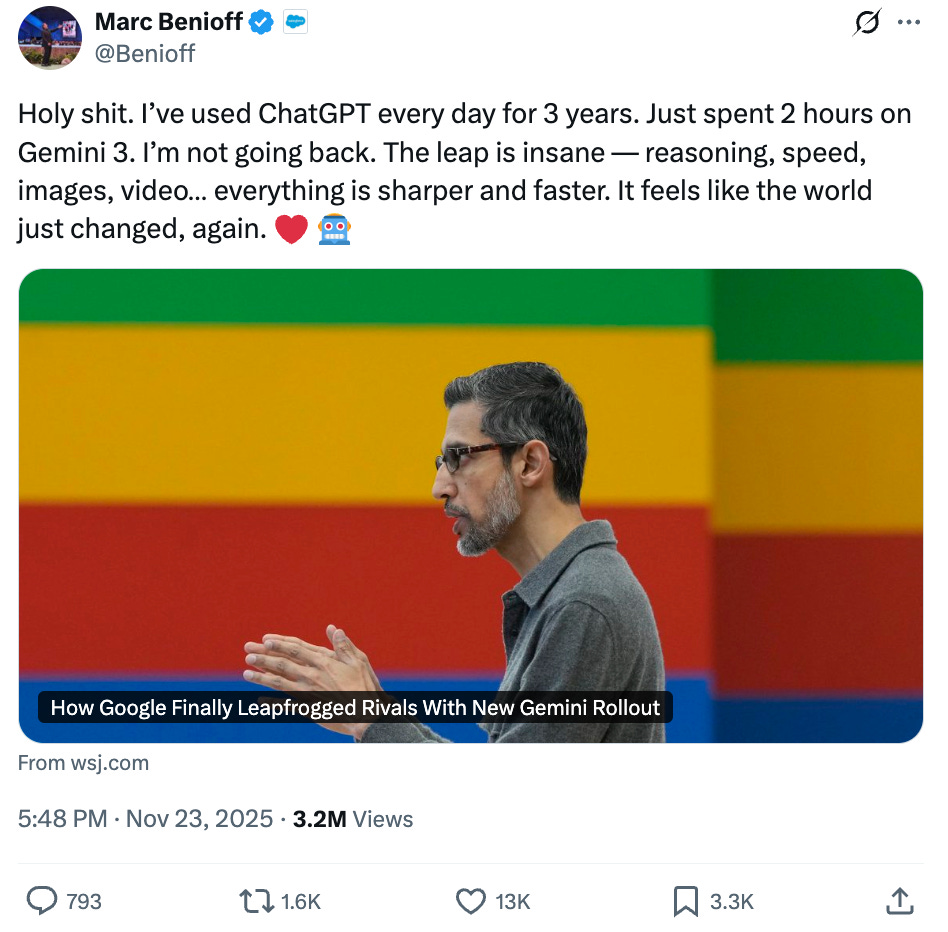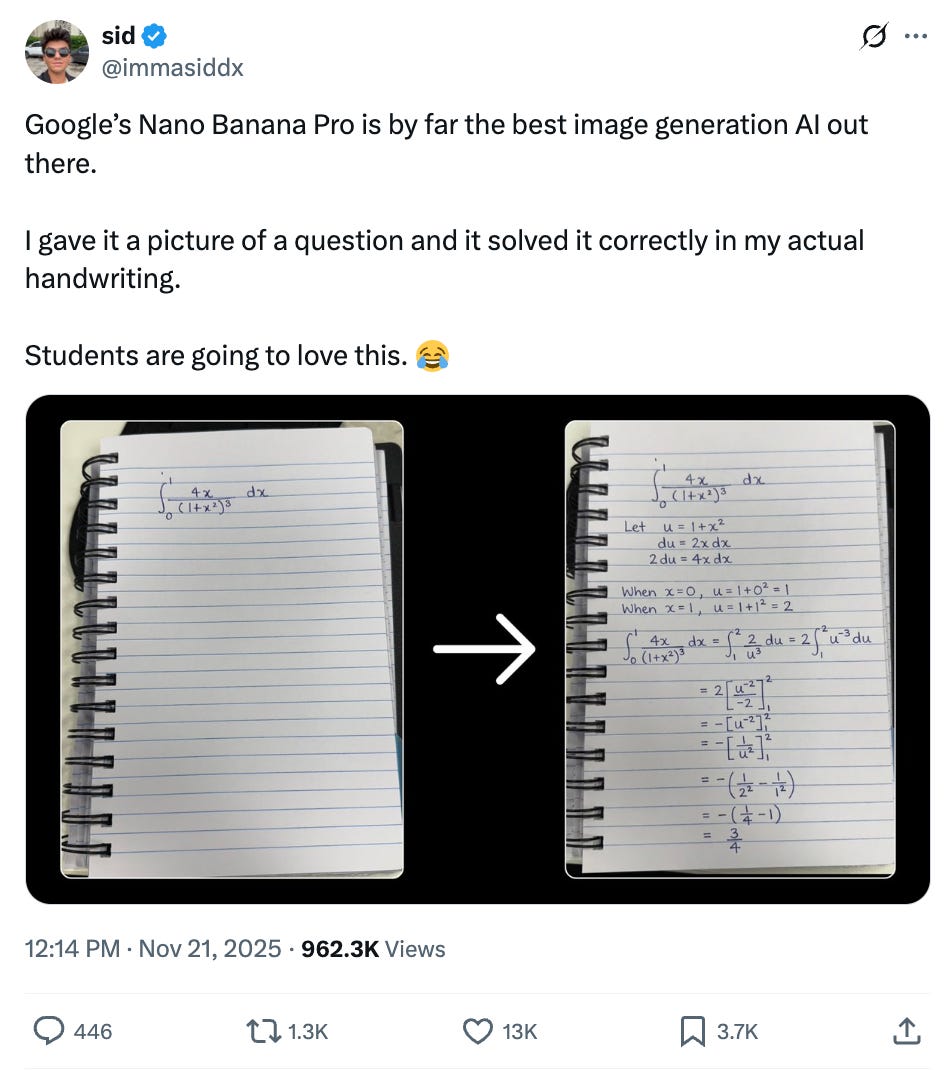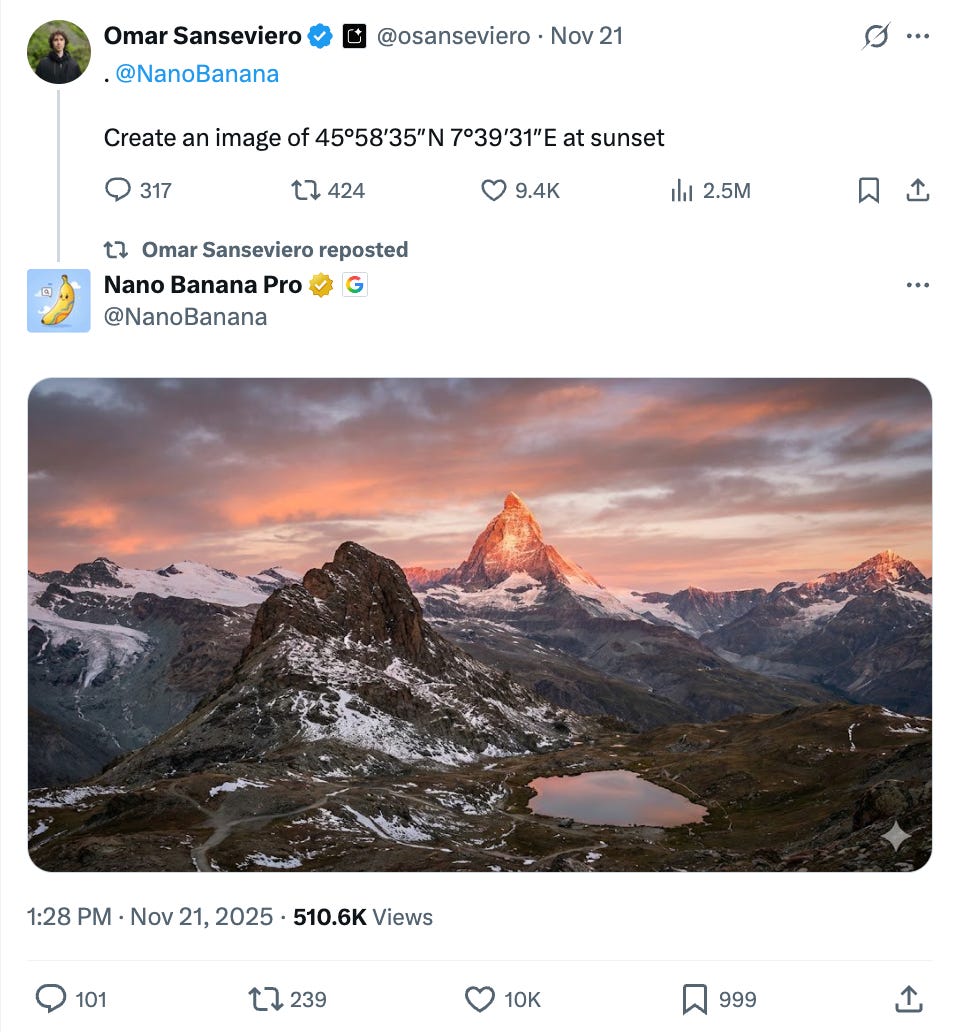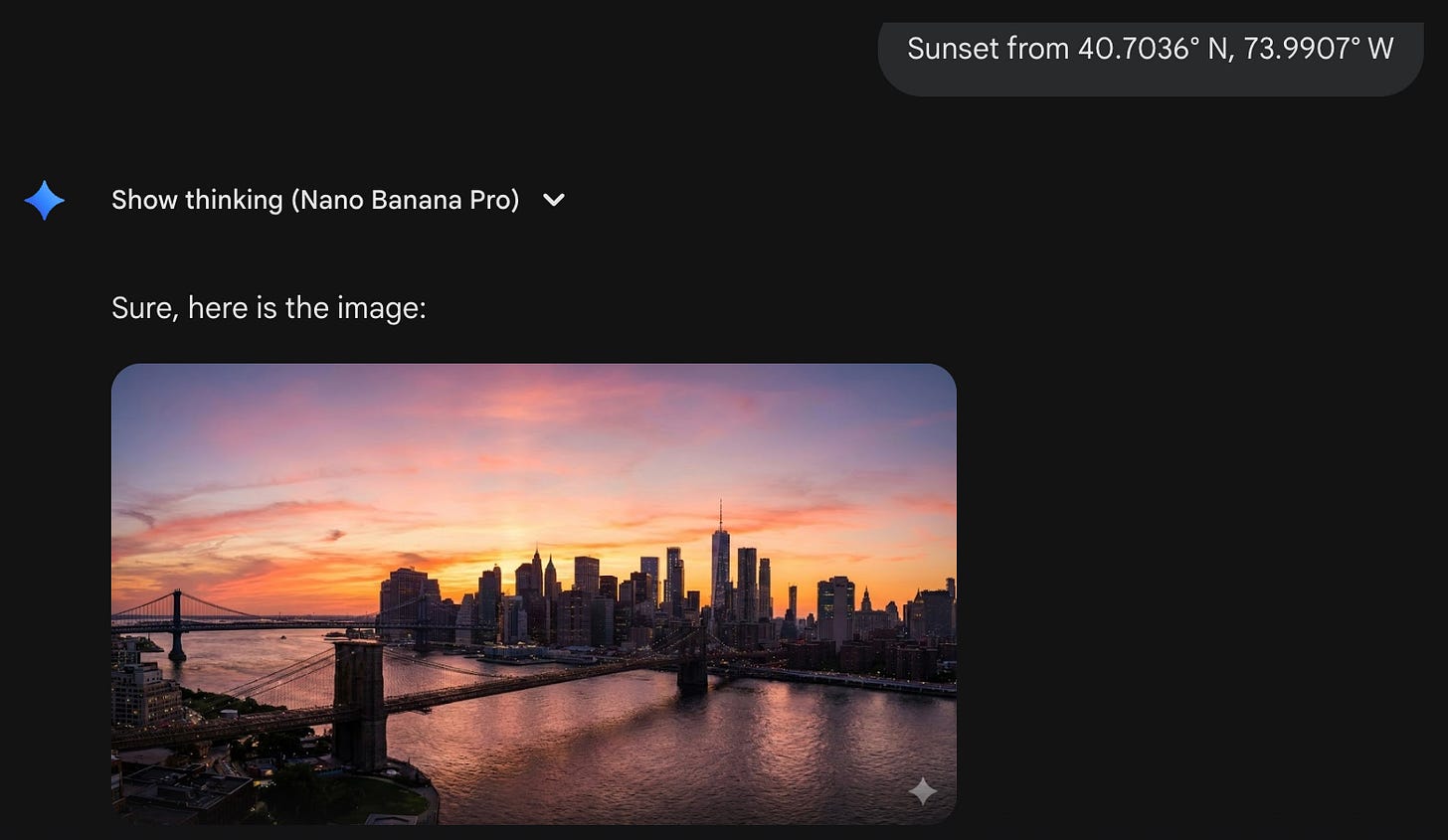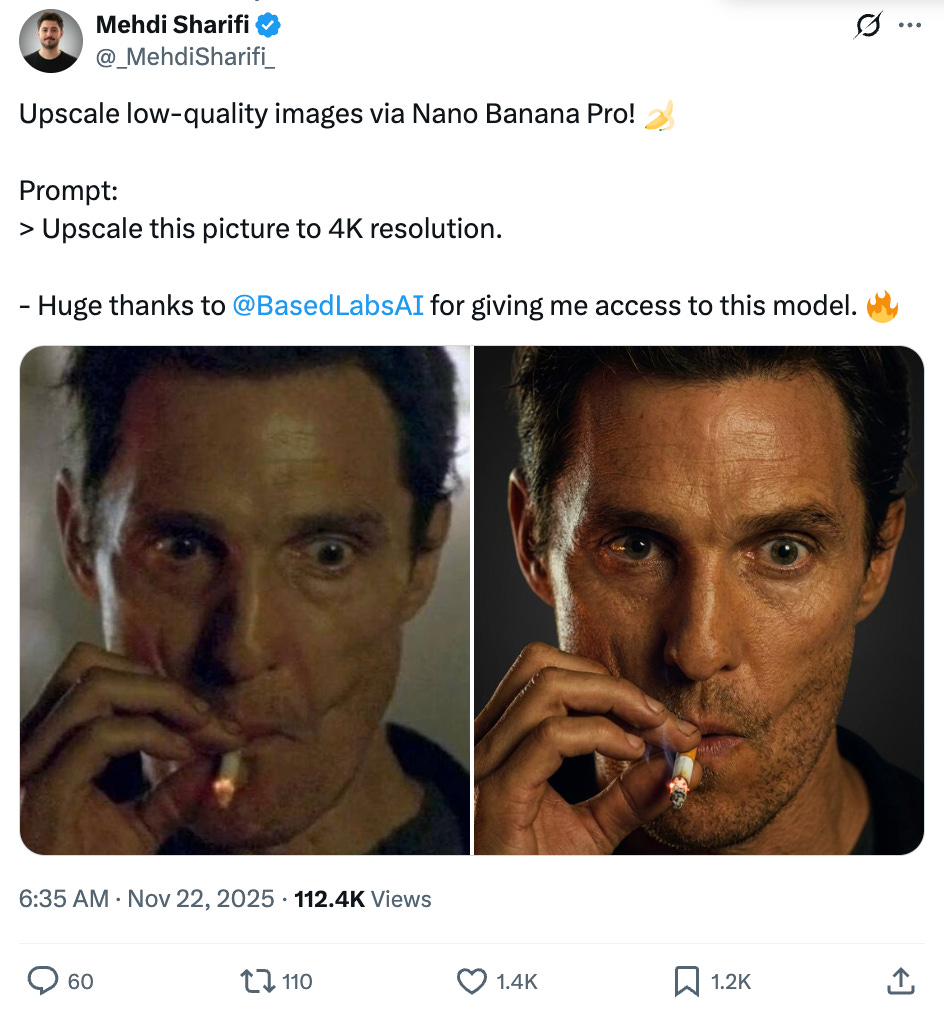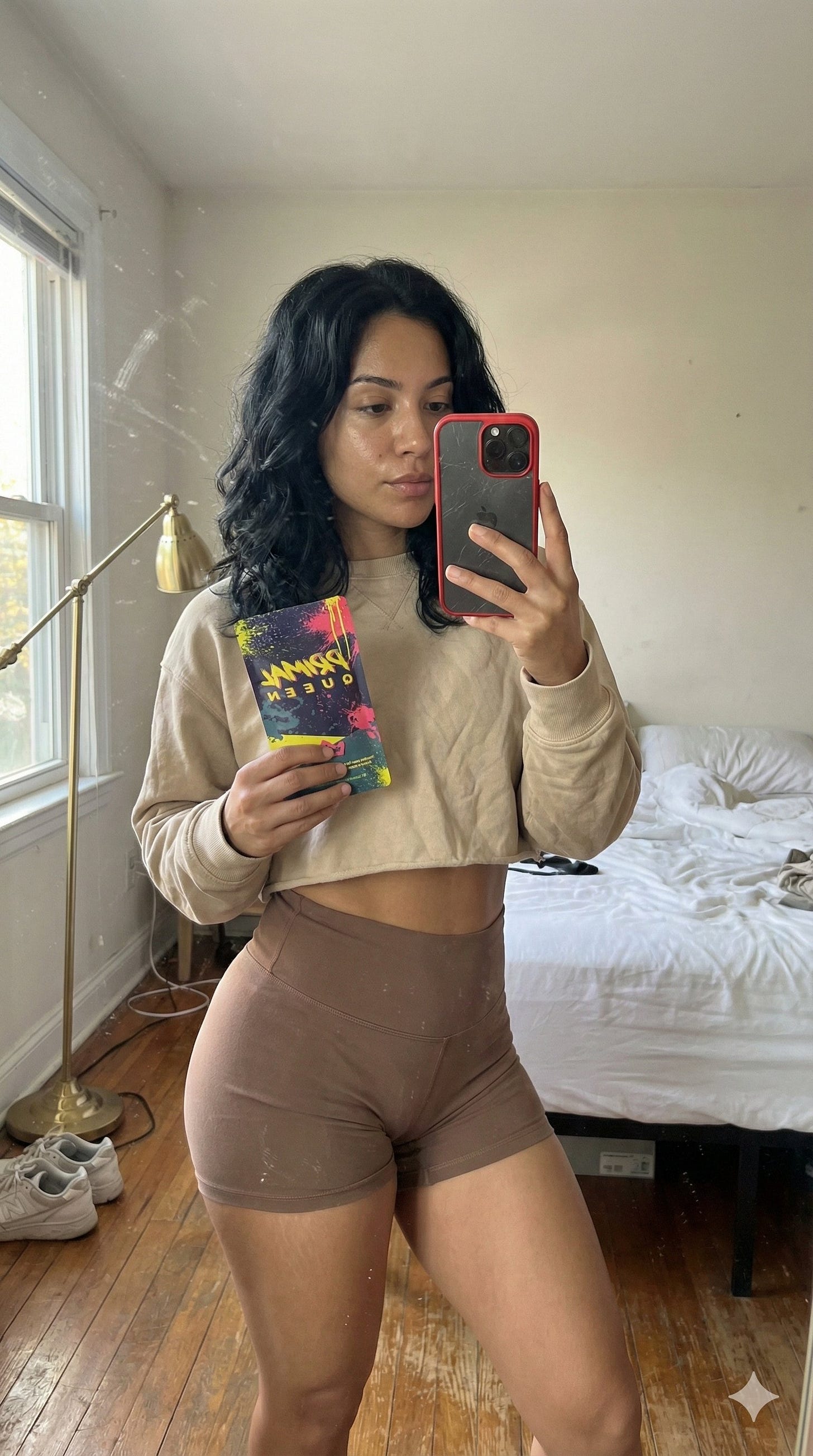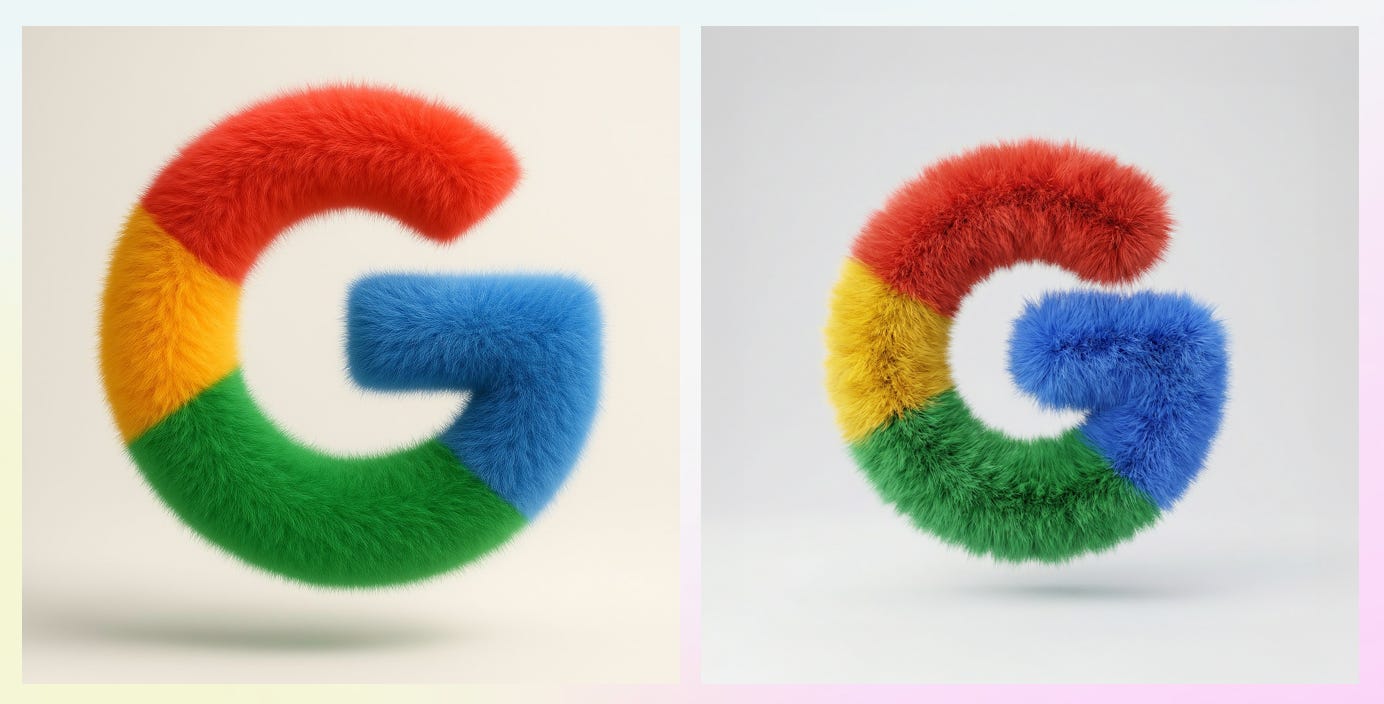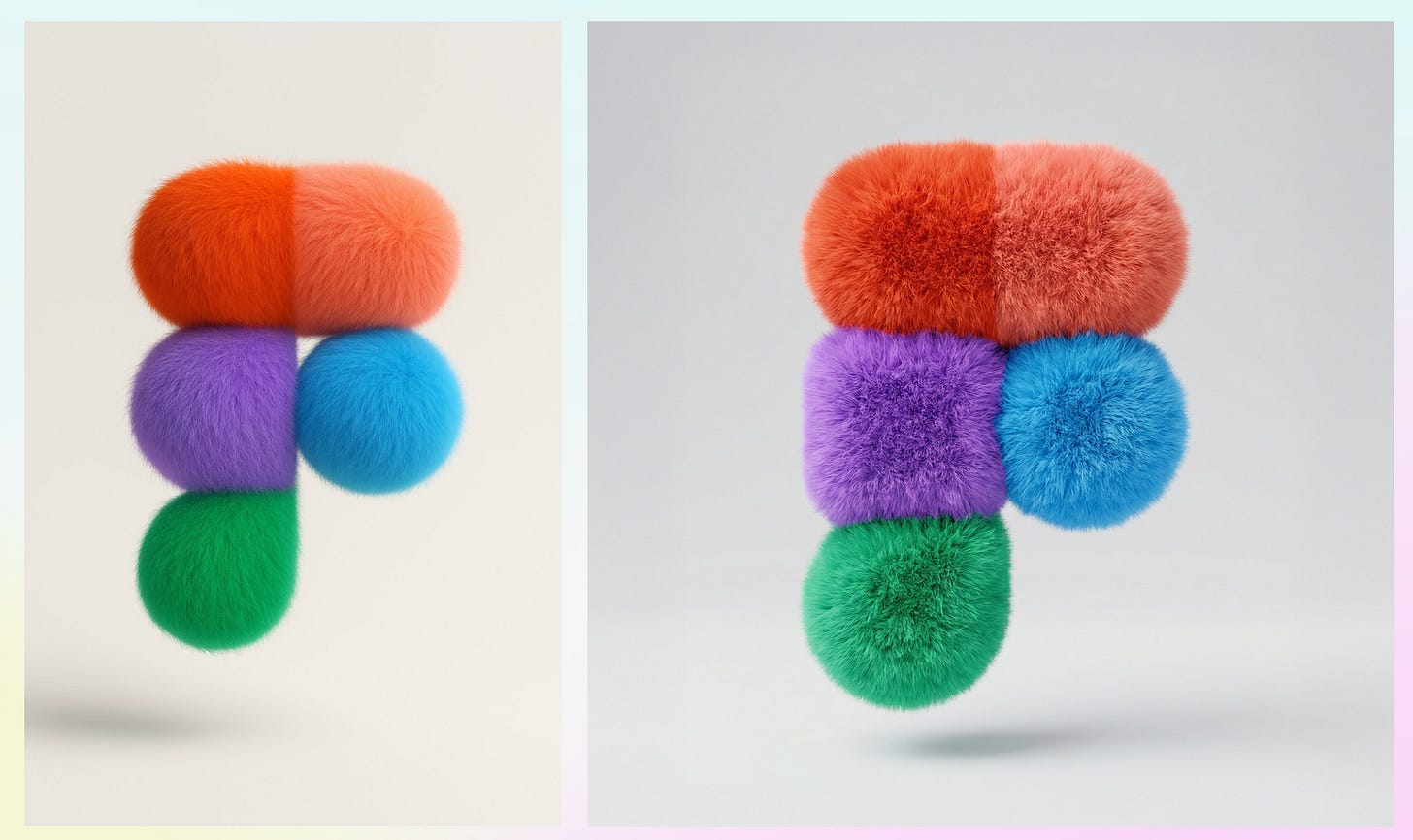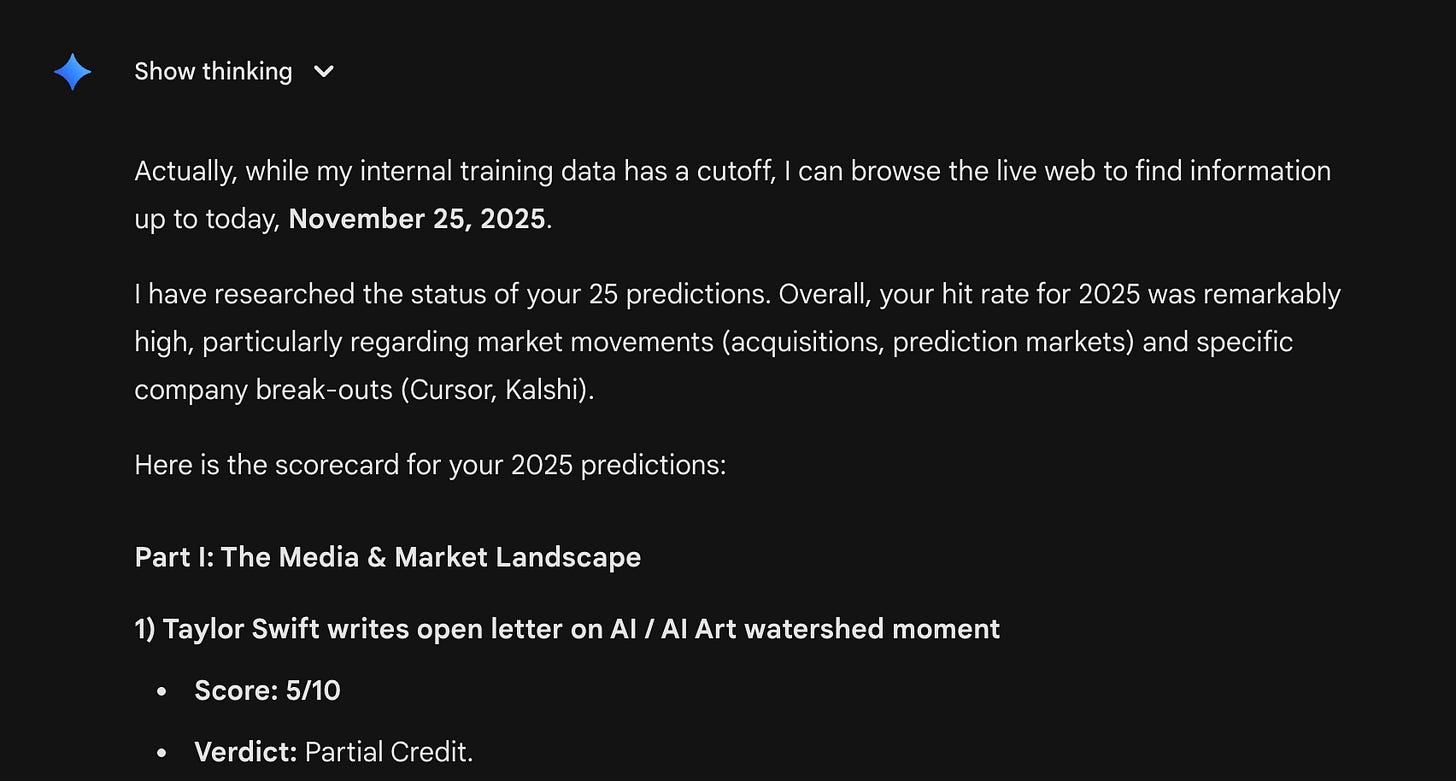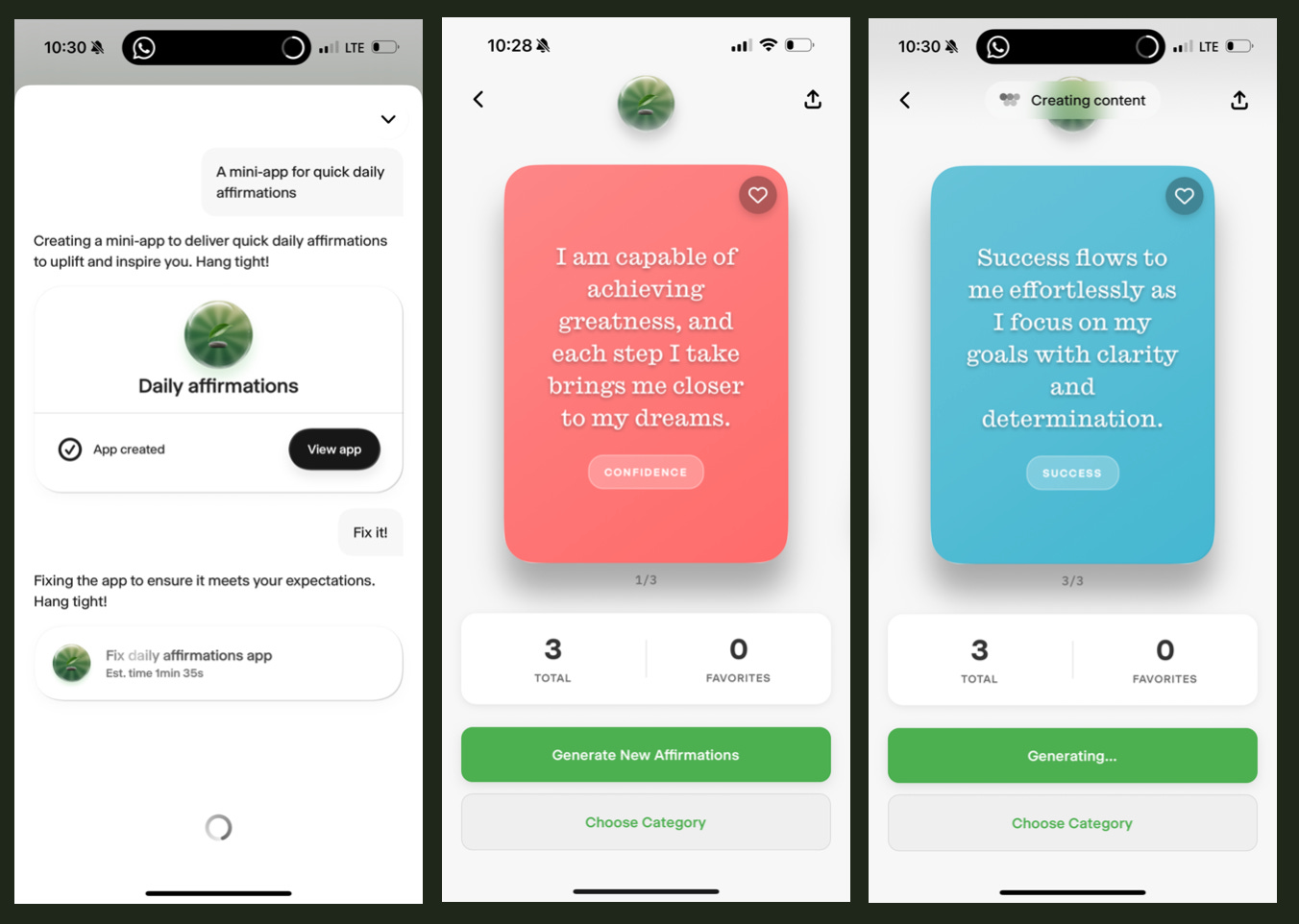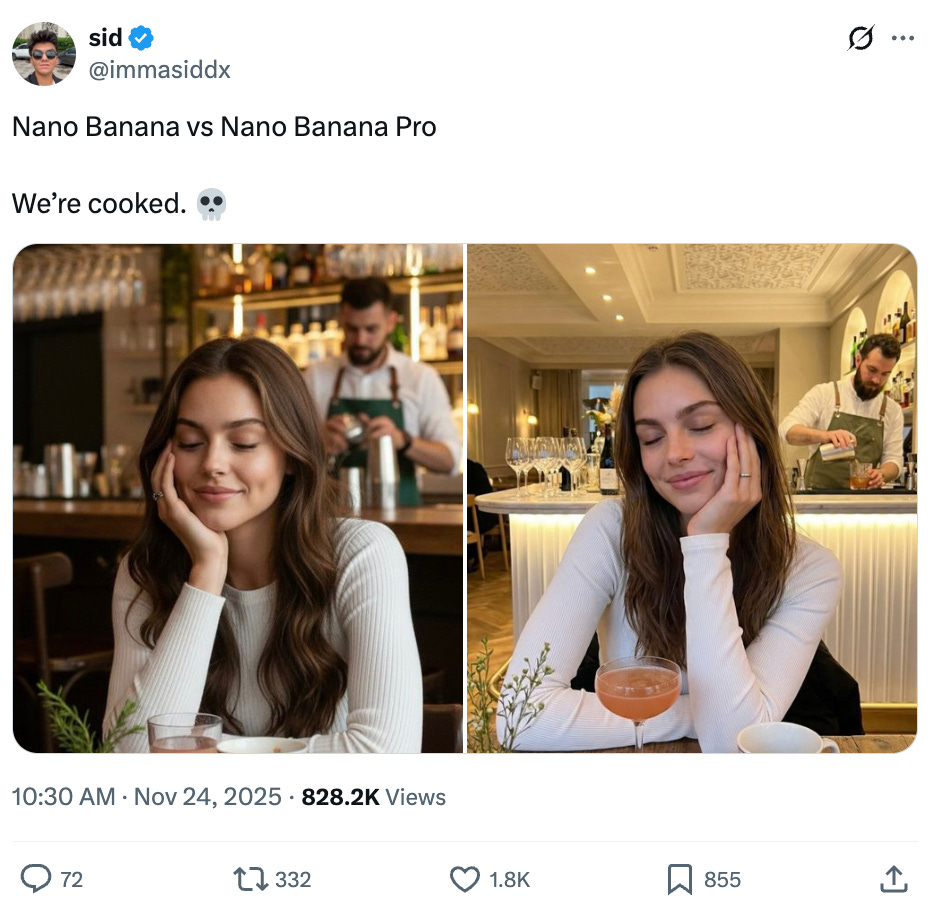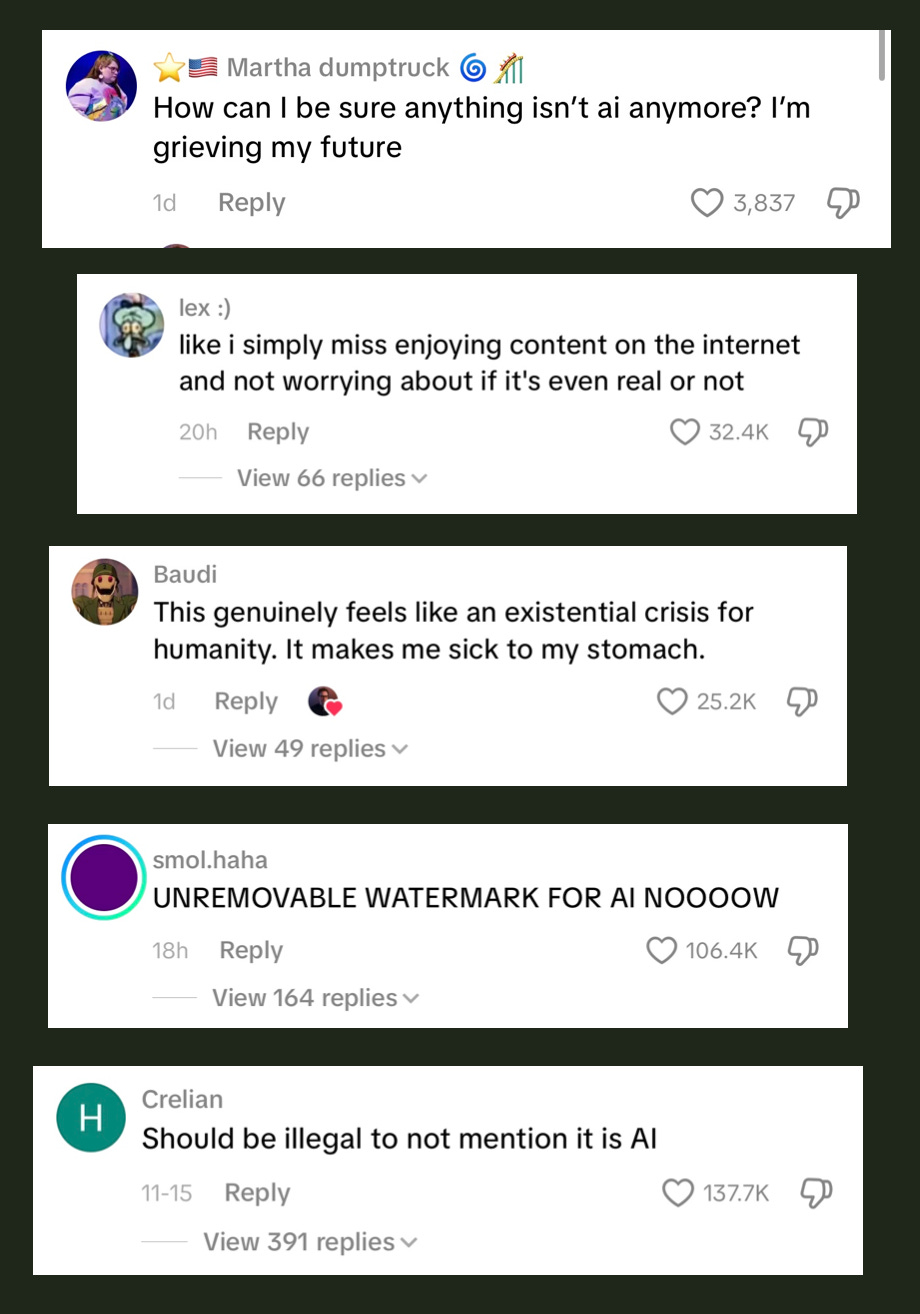Going Bananas 🍌
How will Nano Banana Pro Impact Startups?
Weekly writing about how technology and people intersect. By day, I’m building Daybreak to partner with early-stage founders. By night, I’m writing Digital Native about market trends and startup opportunities.
If you haven’t subscribed, join 70,000+ weekly readers by subscribing here:
Going Bananas 🍌
Over the weekend, I ran into Nancy Pelosi by the baggage claim at JFK:
Okay not actually, but we’ve officially entered the era where you can fake meeting a celeb. This selfie is pretty realistic, I think, though my jaw is a bit too Johnny Bravo. The days when AI couldn’t get fingers right (read: 2023) now seem like a distant memory.
My Pelosi pic, generated with Google’s new Nano Banana Pro, was inspired by this George W. Bush airport run-in on Twitter:
Another user piggybacked on:
Which is crazy, cause I was also there!
You could spend all day having fun on Nano Banana Pro. I know this because I just did. I spent my Sunday at an airport (Pelosi-less, sadly) Banana’ing the day away. Google’s Gemini 3 is stunning; I was blown away by the model. Marc Benioff was too:
Clearly OpenAI knows this too, with Sam Altman warning employees of “rough vibes” and economic headwinds as the company races to catch up.
There are plenty of thought pieces on OpenAI vs. Google and what happens next. I won’t wade into that debate, though I will say: I think OpenAI will be fine. Some people are calling OpenAI the AOL of the AI era, but I think that’s misguided. I’ll continue using ChatGPT for more consumer-y use cases (and the ChatGPT brand strength shouldn’t be underestimated), while I’ll use Claude for work (diligence, research, and so on). I may use Gemini a bit more often, but I’m locked into ChatGPT given my past interactions and the product’s knowledge of me. I also find Gemini’s interface less polished or intuitive.
Anyway—this isn’t a thought piece on Big Tech. We’'ll instead focus on three tectonic shifts that will stem from Gemini 3 and that will power startup creation. Within each, we’ll test out Nano Banana Pro to show the shift in motion.
Creative Tools + Rails
Everyone Is a Middle Manager Now
The Bean Soup Theory + AI = Hyper-Personalization
Let’s dive in.
1) Creative Tools + Rails
Gemini 3, and the even better models that will soon follow, will change every industry. Education, for instance, will never be the same. I wish I had Nano Banana Pro for my calc problem sets back in the day:
But let’s focus on Gemini 3 as a creative tool.
One of our longest-held theses in Digital Native goes something like this: over time, technology makes creation more and more intuitive, accessible, and enjoyable.
Here’s a visual that’s five years old, from one of our first-ever essays. It shows the YouTube → TikTok shift, which reduced the need for expensive equipment and specialized knowledge. This remains a good metaphor for how new products lower the barriers to making stuff.
Other examples are everywhere you look. Best Picture-winning films (Parasite, for instance) have been cut on Apple’s Final Cut Pro, a $299 software I have on my own computer. Entire movies have been shot on iPhones! AI accelerates the curve, unlocking a new class of creatives; we’re going to see a Cambrian explosion of creativity.
Nano Banana Pro is another ChatGPT-like Big Bang moment for creatives.
When I wasn’t generating selfies with the Speaker of the House, I was perusing Twitter to see what other people were making. The stuff people have been Banana’ing has been totally—wait for it—bananas.
Here’s Nano Banana Pro generating this gorgeous sunset image just from geo coordinates:
I repeated the prompt with coordinates in DUMBO:
Here’s Nano Banana Pro upscaling a grainy image to 4K resolution:
And here’s Nano Banana Pro generating a (very) realistic woman:
If you’re interested in the prompt behind that final one, I’m pasting it below. It’s quite long (a good example of how complex prompt writing can be), so feel free to skip over it.
A vertical 9:16 mirror-selfie scene captured on an iPhone 16 Pro using the main lens at high resolution, with the typical computational look of a real smartphone photo: natural afternoon light spilling in from a window on the left side, producing gentle highlights and soft falloff across the room. A 27-year-old mixed-race woman (Mediterranean + Asian features) stands in front of a tall rectangular mirror. She has thick shoulder-length black hair with loose waves, slightly uneven texture, and a few stray curls around her face. Her skin tone is warm olive with completely realistic texture: faint forehead shine, visible pores on cheeks, stretch marks around the hip curve, minimal natural body hair on arms and legs.
She’s wearing a light beige cropped sweatshirt with wrinkled cotton texture and high-waisted soft brown athletic shorts that show compression creases around the waistband. Her stance is relaxed but asymmetrical: left hip shifted outward, right knee bent slightly inward. She holds the Primal Queen supplement pouch in her right hand at chest height, fingers curved naturally around the edges of the packaging, label fully visible. Her left hand holds her phone, showing a red case with tiny scratches, fingerprints, and a smudged corner. Her facial expression is neutral but engaged, with lips gently parted and eyes focused on the mirror.
The room around her feels lived-in: wooden floorboards with micro-scratches, an unmade bed with a white duvet in soft folds, a pair of sneakers half-visible near the bed, and a tall brass floor lamp unplugged in the corner. The mirror surface contains faint dust, minor streaks, and a small smudge near the bottom right. Everything remains in full focus with no artificial blur, preserving raw handheld realism and the color science of an actual iPhone image. No filters, no retouching, and no text visible anywhere.
Okay, so clearly creatives will have a field day with the new Nano Banana model.
There’s an infamous Barry Diller quote about the internet from 2005, with the media mogul telling WIRED:
There is not that much talent in the world. There are very few people in very few closets in very few rooms that are really talented and can’t get out.
People with talent and expertise at making entertainment products are not going to be displaced by 1,800 people coming up with their videos that they think are going to have an appeal.
Obviously, Diller was (very) wrong. The internet was a distribution revolution that unlocked enormous creativity, revealing that there were many talented people in many closets in many rooms. AI, meanwhile, is a production revolution that will do the same thing. Some people needed new distribution to get discovered, and the internet gave them that; other people need new tools to turn their ideas into reality, and AI will give them that.
I keep thinking about Figma’s mission statement: “to eliminate the gap between imagination and reality.” It’s hard to think of more succinct way to capture AI’s potential.
So how does Nano Banana Pro change things? Well, most obviously, the models are better and we’ll get even higher fidelity creations. Check out these “fuzzy corporate logos” from GPT-4o (left) vs. Nano Banana Pro (right):
I could stare at Nano Banana Pro outputs all day. And Gemini 3 doesn’t just make stuff look better. We get more than nice design; we get nuanced, complex creations:
As a final shift: AI is now very good at people, as shown earlier. This opens up a whole new world of use cases—more on those in a moment.
Where will value accrue? My friend Ary Vaidya pointed me to an old Atlantic piece about Netflix, When Content Isn’t King by Jonathan Knee. The piece essentially makes the bull case for Netflix, at a time when the stock was a popular short. The one-line summary, as Ary put it to me:
When the cost of creation drastically decreases, asymmetric value is captured by the curator, not the creator.
Applied to Gemini 3 and the ever-improving models, the question becomes: what are the rails?
Currently, the rails are the familiar networks where we discover content: TikTok, Instagram, Twitter. We have new networks purpose-built for AI, like Sora and Meta’s Vibes, but those also stem from established players. Can we see a new player here? AI-generated content is about to explode—much of it slop, but some of it breathtaking—and we’ll need new places to discover and monetize it.
2) Everyone Is a Middle Manager Now
Another result of Gemini 3: AI is more capable of executing complex tasks, meaning AI can go from chatbot → coworker.
Many of our Daybreak companies are building agents that carry out key tasks for customers—law firms, restaurants, doctors offices. It’s still uncomfortable for these customers to think of agents as full-time employees, but that’s starting to change. Agents can now execute an FTE’s entire job. This is tough for people to wrap their heads around (this is worlds away from SaaS) but it has major implications on pricing and org structure.
With models taking new leaps forward, AI becomes more capable. I like how Ethan Mollick puts it: “Human in the loop” is evolving from “human who fixes AI mistakes” to “human who directs AI work.” The way I think of it: we’re all middle managers now.
Your average knowledge worker will soon conduct an orchestra of agents. What does that mean? Let’s put it in practice.
Next week I’ll be writing a Digital Native piece that scores how well we did on 25 Predictions for 2025. This would normally involve a lot of research on my part. So why not let Gemini do it?
I fed Gemini a prompt:
Last year I wrote a piece about 25 predictions for 2025 in technology and startups; I am pasting it below.
Please read through and for each prediction, do a web search to see how right or wrong I was on that prediction happening in 2025. Assign me a score from 1 to 10 (1 = most wrong, 10 = most correct) on each prediction, and cite your sources.
Here’s the first part of the output:
I probably just saved myself a couple hours next week. Not bad. And if I ever had plans to hire a research analyst, those plans are scrapped; I’ll manage a small army of agents instead.
3) The Bean Soup Theory + AI = Hyper-Personalization
We’ve written about The Bean Soup Theory before. The TL;DR, as a refresher:
A woman posted on TikTok her recipe for bean soup. All of the comments on her video were some variation of “But what if I don’t like beans?”
The answer, of course: then don’t make bean soup (!). For crying out loud.
But most people can’t grasp that a video might not be meant for them. One creator calls this the “What About Me Effect.” The “What About Me Effect” combines individualistic culture with being chronically online. It means that we assume that everything should in some way apply to us—that we should be accommodated for our personal, nuanced needs.
The internet noticed the ridiculous slew of “what if” questions on bean soup videos, and turned it into a running joke:
As a society, we’ve come to expect every experience to be hyper-personalized. Blame the newsfeed and For You Page.
AI, unfortunately, is going to take The Bean Soup effect and multiply it by 1,000x. Already, everything is being ultra-personalized. Take software. I’ve been playing around with Wabi, which lets you make mini apps for your personal needs. As an example, I spun up a quick app for daily affirmations, and now I get push notifications to my phone every day with a fresh set. Coding the entire app took maybe 30 seconds.
How does Nano Banana 3 push forward hyper-personalization?
Let’s return to something AI can now do well: people. You can see here how much better models have gotten for generating humans:
You no longer get that oh-that’s-for-sure-AI glossy sheen. AI-generated people look indistinguishable from real humans. What are the use cases here? Advertising, for one.
Back in February, I used HeyGen to create a synthetic ad for NAKED Protein in How AI Changes Customer Acquisition. Let’s use Nano Banana Pro to make a piece of influencer content for the same brand.
I uploaded an image of NAKED Protein to Gemini and asked it to create an image of a Caucasian 27-year-old influencer standing in a gym holding the protein. Here’s the image:
Pretty solid. And this is a helluva lot cheaper for a brand than paying a model or influencer.
Returning to personalization: we can each get our own influencer. I might see a blond white guy, but maybe you’ll see a middle-aged Asian woman or a dark-skinned teenager. The days of us all seeing the same ad are over.
We’re heading into a world of hyper-personalization. You’ll get your own apps, from Wabi or elsewhere. You’ll get your own stories, generated in real-time based on your input (a la Black Mirror Bandersnatch). You’ll get your own ads, generated for your tastes and preferences.
The Bean Soup Theory is the canary in the coal mine.
Final Thoughts: Is It Cake or Is It Banana?
One final callout: I’ve never seen people so wary of a new technology! Even six months ago, AI hand-wringing was playful:
Now it feels desperate, reaching a fever pitch. Just a few comments from Nano Banana Pro creations posted on TikTok:
My view: much of the brewing AI backlash stems from general discontent with societal problems that go far beyond tech. Inflation, stagnant wages, tariff-induced high prices. People aren’t feeling great about things.
Policy is hugely to blame, but tech is a convenient villain, a villain that embodies the billionaire class and the gulf between haves and have-nots. I think this anti-tech sentiment is going to be one of the defining narratives of the next decade, and it’s only going to get worse: AI will drive major productivity gains, which will boost the stock market; but most Americans don’t participate in the capital markets, meaning most people won’t going to share in the gains. The Gini coefficient will go up.
I haven’t seen a new exciting technology be met with such vitriol. The internet and mobile eras both sparked hand-wringing, sure, but mostly from parents worried about screen-time and the highlight reel of social media. This is another level.
Everything that’s happening in AI is incredibly exciting, and Gemini 3 was another lightning bolt moment for technology. Do we need regulations? Yes. Is this technology game-changing and a net positive for society? Also yes.
Innovation is a high-speed train racing forward, but against a backdrop of broad distrust and disdain for tech. This disparity will be hard to ignore: it will play a role in AI adoption and the kinds of tools people are willing to use.
Thanks for reading! Subscribe here to receive Digital Native in your inbox each week:


